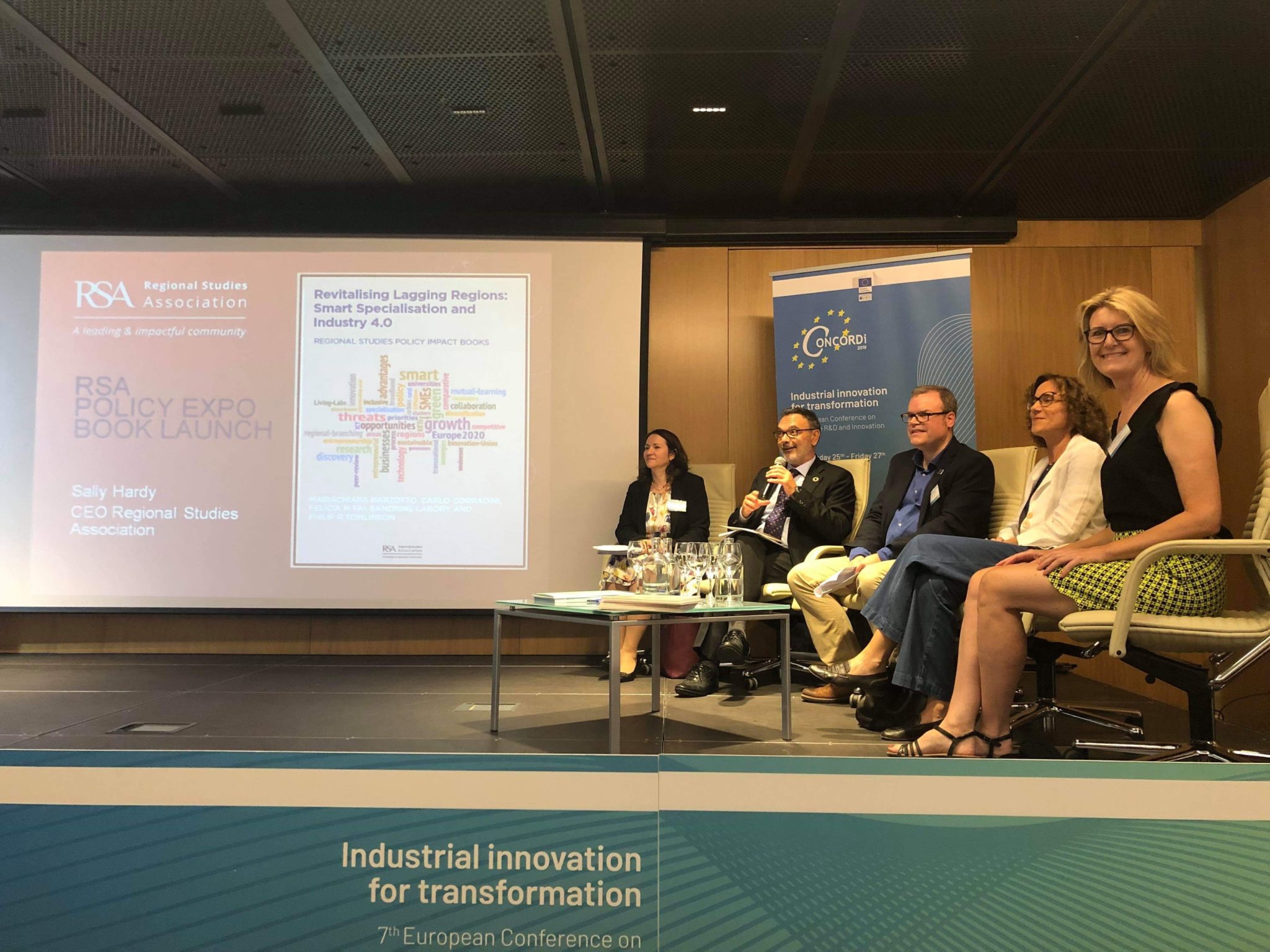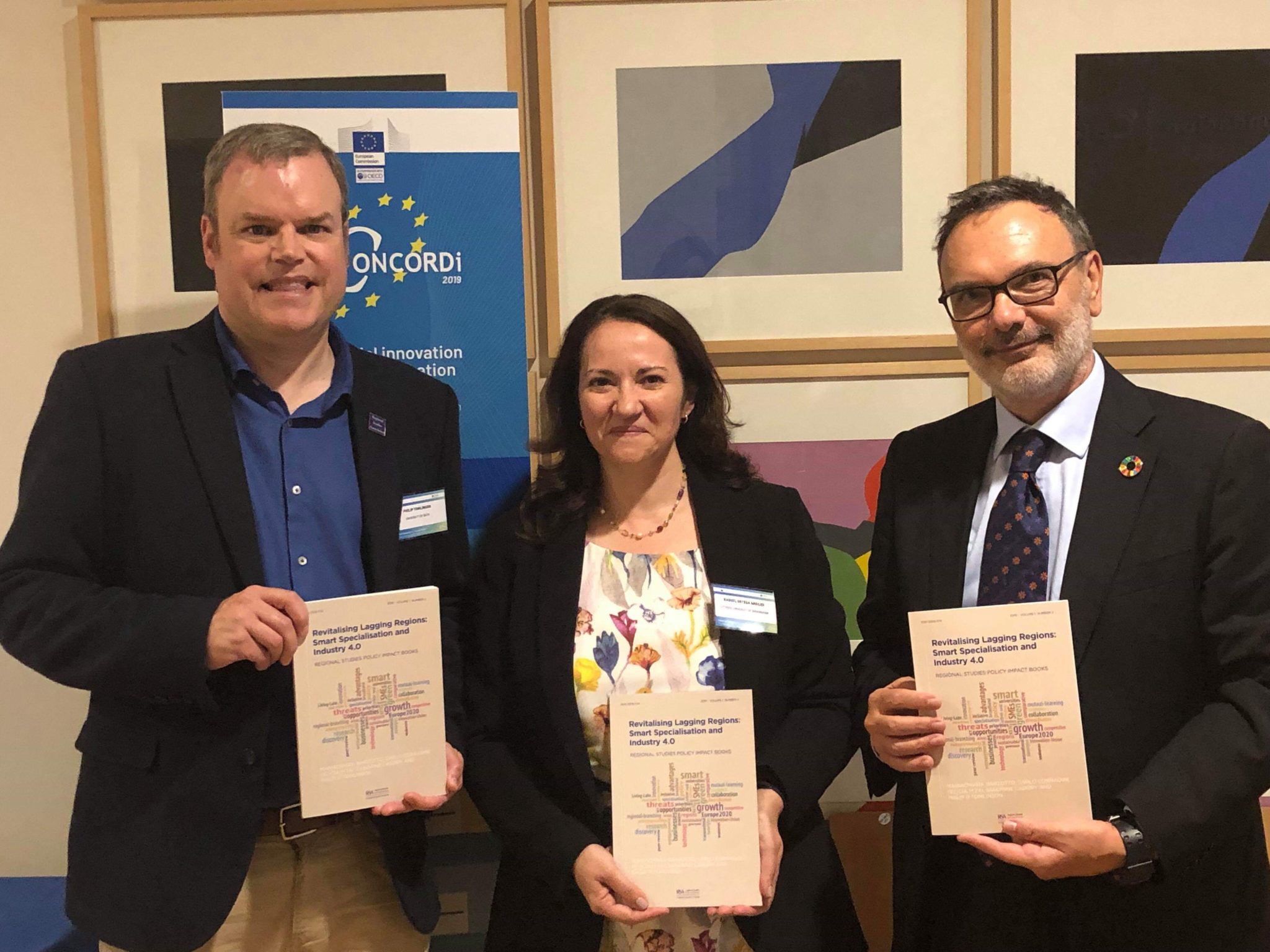Revitalising Lagging Regions: How to improve the EU’s Innovation Programme

By Mariachiara Barzotto, Newcastle University, UK, Carlo Corradini, University of Birmingham, UK, Sandrine Labory, University of Ferrara, Italy, Felicia Fai, University of Bath, UK and Phil Tomlinson, University of Bath.

The last decade has been particularly challenging for the European Union (EU). The aftermath of the Great Financial Crisis (GFC) has seen stagnant growth, weak productivity and widening regional divides. Indeed, lagging regions – where income per capita levels are significantly below the EU average – have been especially marginalised, and there has been rising public discontent with the European project as, for example, manifested in the Brexit vote.

One of the EU’s main policy responses has been its Innovation Programme, better known as Research and Innovation Strategies for Smart Specialisation (RIS3) or S3. Put simply, S3 relies upon public-private partnerships, in which public funds are used to support private sector led ‘activities’ that are regarded as having the best opportunities for new innovation and commercial gain. The funding is targeted at the regional level so as to build upon a region’s existing advantages, specialisms and capabilities. Ideally these are combined with new General Purpose Technologies (GPTs) of Industry 4.0 (I4.0) – such as ICT, robotics and digitalisation – to spur new innovation. This may enable regions to diversify and evolve onto new growth paths.
Consequently, S3 has become a key feature of EU Structural and Investment Funds, especially in Cohesion Policy and the European Regional Development Fund (ERDF). It has been described as the ‘biggest and boldest industrial policy experiment’ in history. Yet, its ability to transform the prospects of lagging regions has been seriously questioned. In part, this reflects the fact that S3 can unduly favour more dynamic and leading regions. These regions are blessed with stronger technological capabilities and business networks, and as such are best placed to generate new and exciting innovation projects that are ripe for S3 funding.
This conundrum represents a significant challenge to the legitimacy of S3, especially within the context of the EU’s broader policy aim of trying to deliver balanced regional growth and building ‘inclusive, innovative and reflective societies’. This issue will need to be addressed in the forthcoming EU funding cycle (2021-2027).
So how might EU innovation policy be better utilised to turn the perceived potential of S3 and I4.0 into reality for lagging regions? In our new RSA Policy Expo book entitled ‘Revitalising Lagging Regions: Smart Specialisation and Industry 4.0’, we seek to answer this question where we set out 5 key recommendations.

First, build upon place-specific assets. Policymakers need to avoid trying to replicate policies that may have worked well in quite different places. At heart, S3 is a ‘place-based policy’ so there should be a careful focus on targeting resources on those possibilities that offer a region the best chance to develop. For example, a regional skills-based programme could be geared towards enhancing existing sectoral strengths, such as in the Italian Belluno eyewear district, where they have established specific training institutions to boost inherited skills. But such a programme should also encompass a broader skillset for promising and/or emerging sectors in related fields. The Grand Coalition for Digital Jobs – a European multi-stakeholder partnership to enhance ICT education within industry – is a step in this direction.
Second, enhance the Regional Innovation Eco-system (RIE). The success of S3 will depend upon a well-functioning RIE. This requires policies that strengthen local institutions and regional anchors, such as public research centres and higher education institutes, and build strong network links with business. These networks should be local, national and ultimately global to facilitate knowledge exchange and commercial opportunities. One of Italy’s poorest regions, Puglia has begun to do this. Its Manufacturing RDMI initiative is geared to providing SMEs better access to new smart manufacturing technologies and training and expertise, with local university partners.
Third, invest in technological upgrading and I4.0. Future prosperity will depend upon regions identifying and utilising the key I4.0 technologies. These have the potential to transform lagging regions, yet the evidence so far is of widening regional technological gaps. To address this, EU policy should seek to make such technologies more widely accessible. Facilitating crossovers between manufacturing and services, and new technologies might be useful. Knowledge transfer mechanisms such as staff exchanges, entrepreneurship programmes and improving labour mobility and research collaboration would help.
Fourth, strengthen extra-regional collaboration. EU policymakers could make more of building collaborative links between leading and lagging regions. Such links can enable lagging regions to acquire new technologies, exchange knowledge and enable them to find new specialisms. Existing EU frameworks, such as INTERREG, have had some success. For example, the ¡VAMOS! Project has developed a prototype underwater, remote-controlled and environmentally viable mining system to exploit abandoned mines. It has brought together 17 regional partners from across the EU, and fused expertise from geology, robotics and mining. For partners in a lagging region such as Cornwall, this project offers opportunities to develop new specialisms in environmental marine mining with global application, but based on their historical capabilities.
Fifth, embrace social innovation and the Foundational Economy. The main economic activity in many lagging regions is the Foundation Economy –the essential goods and services of everyday life. Yet current innovation policy tends to focus upon a narrow set of advanced technology sectors, which largely reside in leading regions. There is plenty of scope for the next EU funding cycle to support so-called social innovation in foundational sectors such as healthcare, education and food. This will require greater community involvement in innovation projects to enhance ‘wellbeing’ at the local and regional level. Interestingly, the Welsh government has begun to explore such possibilities, with a commitment to prioritize a number of ‘foundation sectors’ for support.
Taken together, we believe these recommendations are useful starting point for improving upon current EU innovation policy, and better tailoring of it to revitalise lagging regions.